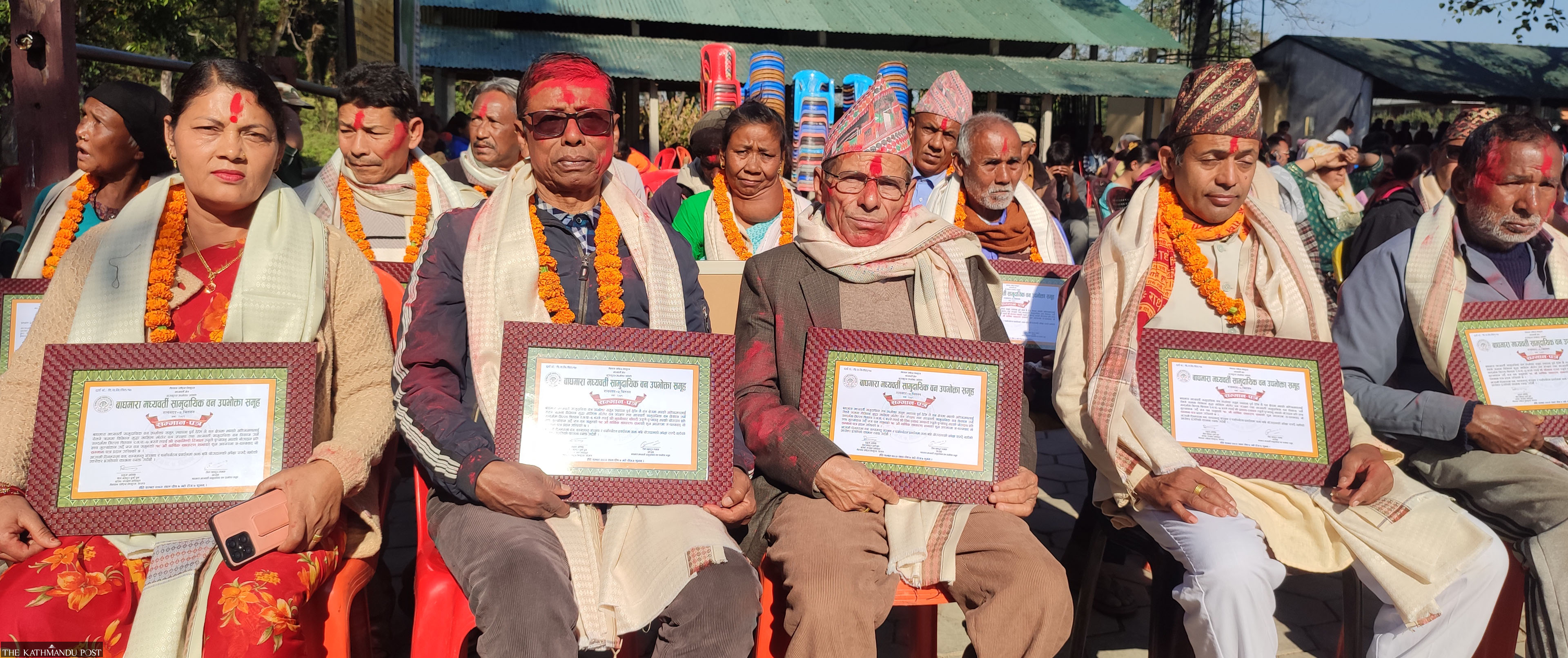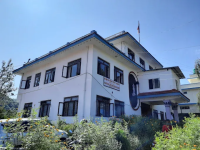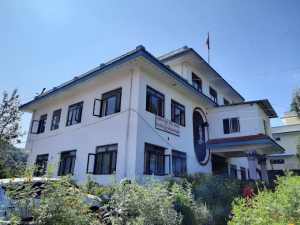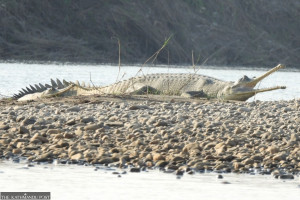Bagmati Province
Decades-old fight against privatisation of forest land is bearing fruit for Baghmara Buffer Zone in Chitwan
Tourism has changed the face of the local community who have worked hard to protect the forest over the past decades.
Ramesh Kumar Paudel
Visitors to Sauraha, a popular wildlife destination, also often reach the nearby Baghmara Buffer Zone Community Forest to enjoy a boat ride along the Budhi Rapti river and for splendid views of the forest from the view tower in the middle of the forest.
Tourism has changed the face of the local community who have worked hard to protect the forest over the past decades.
The community forest, spread over an area of 215 hectares, is filled with varied flora and fauna. Wildlife enthusiasts visit the area to get a glimpse of spotted deer, rhinos, several species of birds, and tigers.
However, if the locals had not fiercely fought against the land mafia to protect the forest land, the story of Baghmara Buffer Zone Community Forest would have been different, says Bhubhaneshwar Prasad Chaudhary. Chaudhary is a native of Baghmara and is the former chairman of the forest. His family has dedicated itself to the protection of the forest land.
Back in the late 1980s, the locals strongly protested against the privatisation of the forest land. Around 103 bigha [70 hectares] of land inside the forest had been registered in the names of private individuals before 1989. Around two dozen locals led by Chaudhary, Rukmini Rimal, Shiva Prasad Acharya, Somala Raut, Januwa Raut, Kanchha Tamang, and Bishwanath Poudel led a protest movement to prevent the privatisation of the forest land.
The locals protested against those who were building private houses inside the forest area. Twenty-one people were arrested by the police during the protests, says Rimal.
“We fought tooth and nail against those who wanted to privatise the forest,” said Rimal. “All those years of resisting have paid off. Today we are very proud of what we have managed to protect.”
Rimal, the only woman in the group of protestors, recalls the difficult days. “The case was in the court for 13 years. We had to keep running around, but we finally managed to save the forest,” she said.
According to Chaudhary, Baghmara got its name during the Rana regime [pre-1951] in Nepal when the ministers would come to the forest to hunt tigers.
“Sometime in 1966, the landlord appointed by the royal family started giving written permits for agricultural pursuits in the Baghmara forest area to private individuals,” said Chaudhary. “The encroachment of the forest area started after the distribution of the permits for agriculture. Later it became a playground for the land mafia. They would produce the same old permit in 1989 and claim the forest land. Around 64 people acquired their land ownership certificates for 103 bigha of land inside the Baghmara forest in this manner.”

Parashuram Lamichhane, the former secretary of the Baghmara Forest Office, said that the land ownership certificates were given to people under the recommendation of the landlords. “The land permits were valid, but due to strong local protests advocating for the conservation of the forest area, the landowners could do nothing,” he said. “The locals destroyed the newly planted fields and demolished the physical infrastructure they had constructed. This attracted the government’s attention.”
According to Chaudhary, 18 people with land ownership certificates gave up their ownership on February 15, 2000, accepting the land as a forest area. After a detailed investigation into the documents, the forest ministry decided to cancel the land registration on May 22, 2000, then appealed to the Supreme Court to cancel the permits and restore the land to the forest. On June 30, 2002, the Supreme Court cancelled the land registration decreeing the forest a protected area.
Today the forest is an example of a model forest. It does not generate revenue by selling forest products but by attracting tourists. “Currently, the forest earns Rs3.91 million from elephant safaris, Rs10.2 million from boating activities and Rs2.5 million from entry tickets annually,” said Asman Lama, treasurer of the Baghmara Forest Office. “Before the Covid pandemic, the annual income of the forest was around Rs40 million.”
After setting aside a budget for forest conservation, the income generated from tourism activities is also spent on supporting the local secondary school as a way of giving back to the community, which worked hard to protect the forest.
“Rs 1.2 million goes to Malpur Secondary School annually to support the local children in their education,” said Lama. “The locals who fought against the privatisation and for the benefit of the forest and the local community were felicitated during the 19th general meeting of the forest on Saturday. Among the 21 people, four were honoured posthumously.”




 9.12°C Kathmandu
9.12°C Kathmandu1.jpg)











%20(1).jpg&w=300&height=200)

